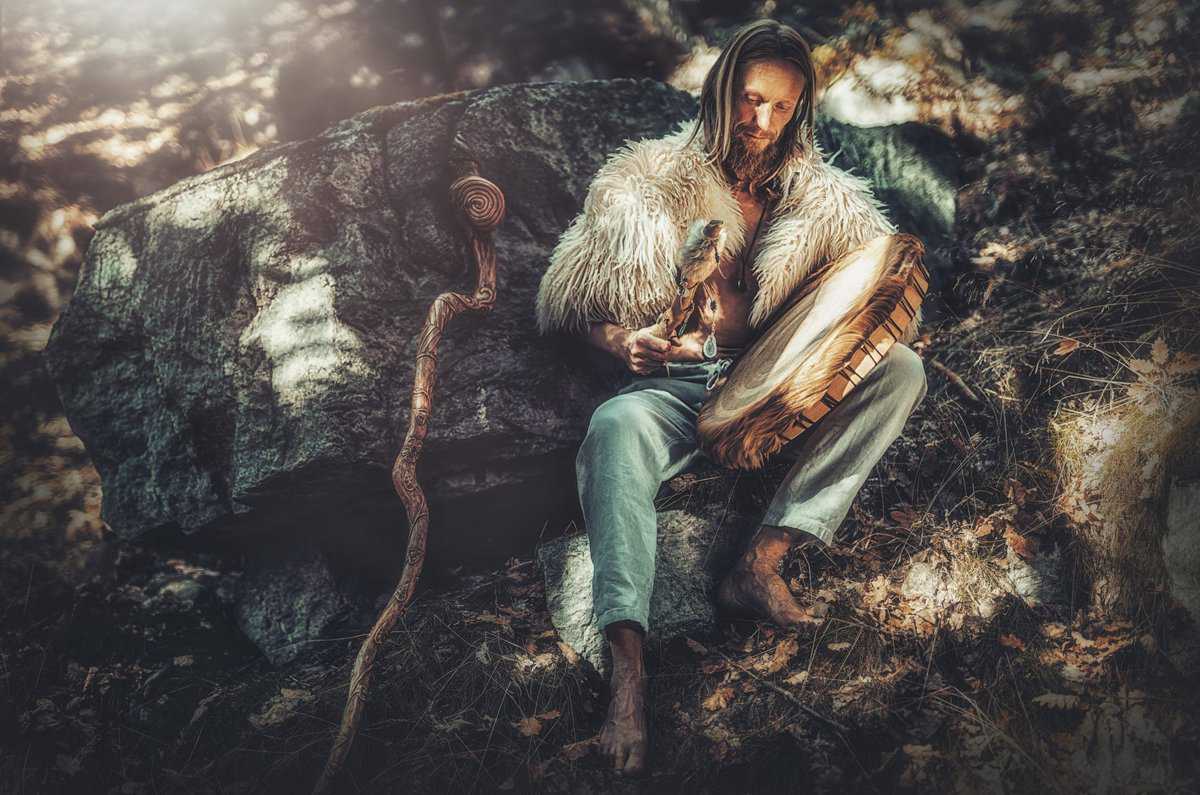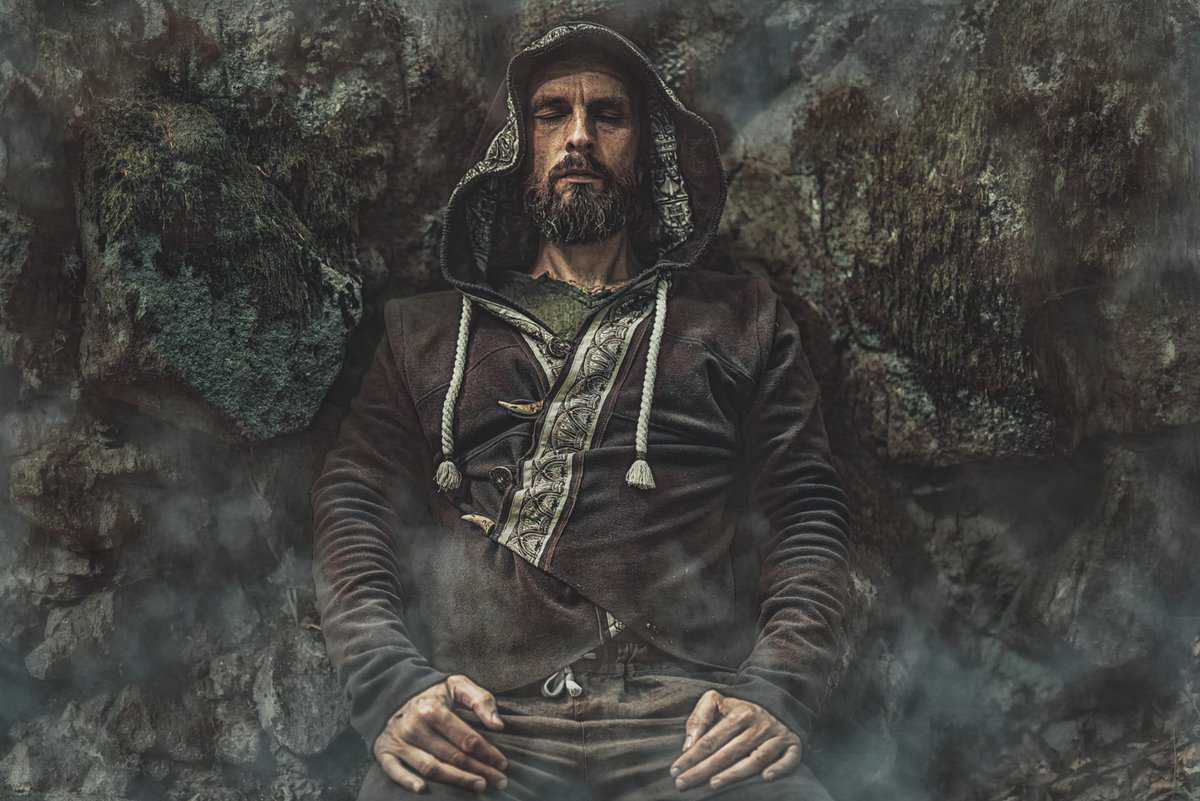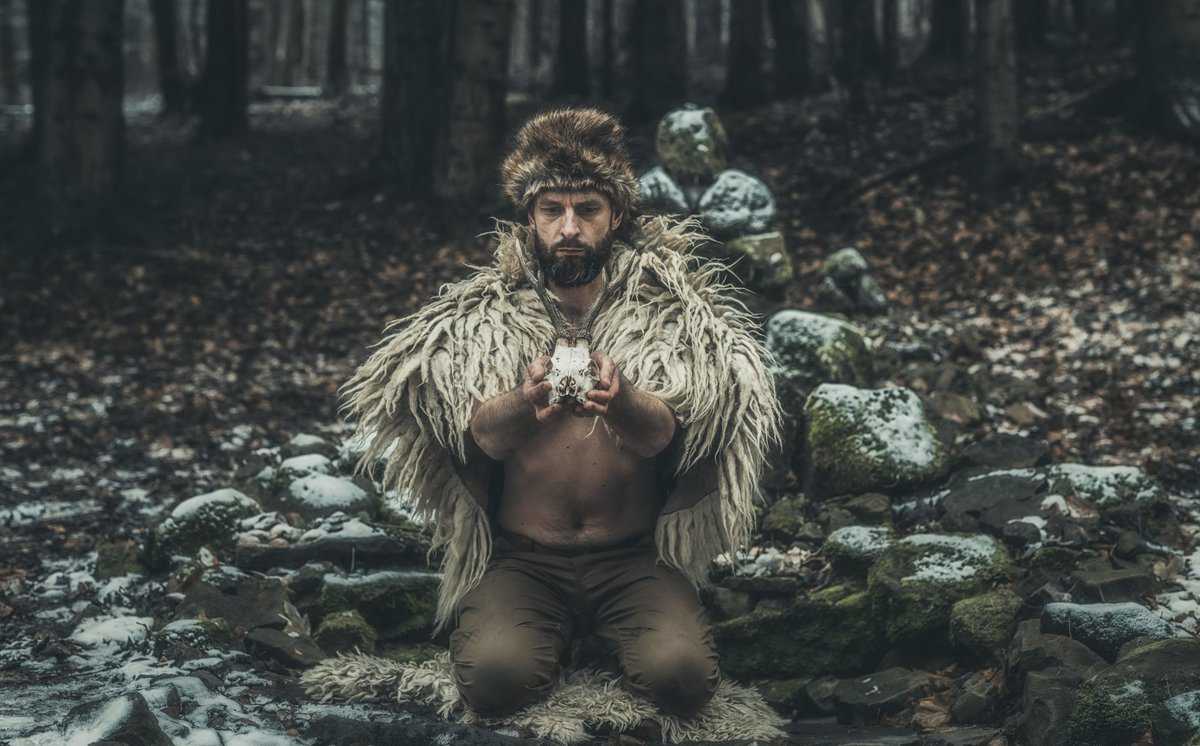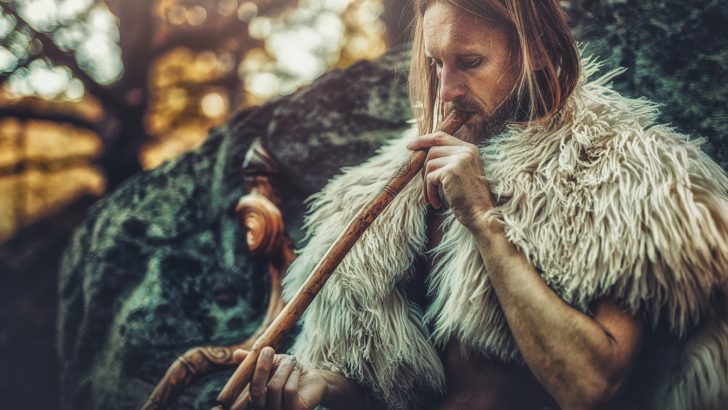Does Nordic shamanism persist in the far North reaches of Europe?
And what is it about Norse shamans that makes them stand out?
The roots of Nordic shamanism are ancient, and they run deep. In recent times, there’s been a revival of interest in shamanism. People crave achieving a deeper understanding.
And shamanism provides precisely that through the lens of spirituality.
So, how did the old Norse shamans practice spirituality?
Here’s everything you need to know about Nordic shamanism – and more.
1. What Is Nordic Shamanism?

Norse mythology intertwines magical tales, divine beings, and mystical landscapes.
One could devote the entirety of their life to studying the mythological narrative. There’s so much to sink your teeth in. The more you do, the more mysteries unfold before you.
The shamanic way has persisted since the Viking age in the far North of Europe.
Shamanism is one of humanity’s oldest spiritual practices. Even today, people engage in shamanic rituals and practices, striving to elevate their perception and see beyond the veil. For those who want to better explore the topic in depth, there is also the option to use ghostwriter diplomarbeit services.
Northern European shamanic tradition goes hand-in-hand with mythology.
Northern European shamanic tradition goes hand-in-hand with mythology.
Therefore, it involves a pantheon of deities, including the God Thor and Odin and the Goddess Freyja. Shamans seek protection and wisdom from the Gods they worship.
The way of the shaman isn’t as prevalent as it used to be. Nevertheless, people work hard to preserve ancient traditions. And your being here means that the practices still endure.
So, let’s look at what the Vikings revered and believed in.
2. What Do Nordic Shamans Believe In?

Norse shamanism is forged with deities – gods and goddesses.
Northern tradition prioritizes establishing connections with divine beings and entities.
A shaman can access the spiritual dimension through various shamanic practices. With what purpose? To uplift their community. To find guidance. And to harness healing energy.
Besides gods and goddesses, the Northern tradition highlights the importance of the World Tree – Yggdrasil. Yggdrasil is a main plane of existence linking different realms together.
In other words, it symbolizes the connections of all planes and existences.
A Nordic shaman can draw crucial, life-changing wisdom from the World Tree.
Sometimes, they may even access it during trance-like shamanic rituals and practices.
Beyond this, a Norse shaman honors the natural world. They recognize the sacredness of nature and often engage in rituals and practices to commune with plants and animals.
Tools are often used to enhance ritual practices – like runes and instruments.
Ancient, traditional Nordic shamanism is closer to religion than most other cultures.
The more you study their mythology, the more you learn about their spiritual beliefs.
Here’s how Norse culture compares to other shamanic traditions:
But what are their rituals like? What do they practice?
3. What Do Nordic Shamans Practice?

Norse shamanic rituals involved utilizing Seidr (in Old Norse: Seiðr).
What is it, precisely? It’s an ancient form of magic. It was actively practiced during the Viking Age. It allowed a Viking shaman to channel healing energies and manipulate fate.
More than that, Seidr can be harnessed to see the future. In other words – divination.
And it was mostly practiced by women, while men faced an unusual social stigma. In the Viking Age, it was considered unmanly to practice shamanism and orchestrate rituals.
But what were these rituals, anyway? What did they involve?
Shamans would attempt to establish contact with spirits through awareness. More precisely, they enter a higher state of consciousness and reach into the spiritual realm.
They did this through chanting, drumming, dancing – and even consuming hallucinogens.
Staves were used to channel and direct spiritual energy.
But shamans could also use Seidr magic for evil purposes. In other words, they could help them curse enemies or cause misfortune, which was particularly useful during wartime.
Knowing this, we face another question: do shamans still practice Seidr today?
4. Does Nordic Shamanism Still Exist?

Ancient Nordic cultures and traditions continue to withstand the test of time.
It’s not just being actively practiced in certain areas – but explored by individuals worldwide fascinated with Norse mythology. The modern world yearns for spirituality.
While some aspects of Nordic culture and tradition have been lost or altered over the centuries, today’s focus lies in preserving and using ancient traditions to enrich the world.
Now, more than ever, people desire to reconnect with their inner spirituality.
And it’s not just Norse mythology they’re interested in – but shamanism in general.
This spiritual curiosity is a byproduct of the modern era – a blessing and a curse.
Nevertheless, the more you learn about shamanism practiced in the Viking age, the more you understand why it matters today. And you realize how it can help you awaken.
Even today, these sacred rituals continue to endure as an ever-evolving spiritual path.
Of course, things change over time – but the essence of shamanism remains pure.
Since there are still Viking shamans around, that brings another question: can you become a Viking shaman? What does it take to elevate your consciousness and embrace the call?
5. Can You Become a Nordic Shaman?

People who love Norse mythology and are curious about shamanism may wonder if they can become a Viking shaman. Sounds cool, right? But being a shaman takes a huge effort.
So, think it through. Becoming a shaman is a life-changing decision.
However, there are no more traditional Norse shamans as in the pages of history.
Things have changed and evolved. But you can still learn from the shaman’s way.
Practicing Seidr and expanding your knowledge about Nordic mythology goes a long way. Use that knowledge to grow. Incorporate it into your life to renew your mind and spirit.
Although you can’t become a shaman in the literal sense – it’s different today.
There’s the New Age shaman who teeters on the edge.
You can embrace their spiritual perception and stay true to your way of living.
And that doesn’t demand sacrifice. And there’s so much you stand to gain.
6. In Conclusion

Throughout history, Nordic shamanism persisted, endured, changed, and evolved.
And it’s still talked about today. More than that, it’s practiced in a way.
Although shamanism is modernized, it remains a path leading to self-growth.
So, open your heart, mind, and soul to enrich your being with wisdom and knowledge.
Let the shaman’s way guide you down a self-reflective path.

Painting and writing – these are two passions that I have been perfecting for a decade. I’m passionate about exploring the connections between the stars and numbers. Through insightful articles you can learn how these ancient practices can offer guidance, clarity, and self-discovery.

